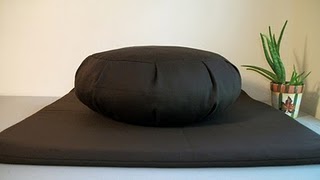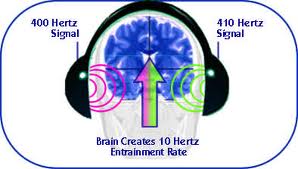Zafu Cushions
 Meditation is all about finding a space where you can quiet your mind and focus on the present moment. The medical benefits speak for themselves but finding that space can be quiet difficult. Some use binaural audio to help them focus, others find a quiet spot. Others use specially designed seating to help improve the quiet space. One such method is the use of a zafu cushion.
Meditation is all about finding a space where you can quiet your mind and focus on the present moment. The medical benefits speak for themselves but finding that space can be quiet difficult. Some use binaural audio to help them focus, others find a quiet spot. Others use specially designed seating to help improve the quiet space. One such method is the use of a zafu cushion.
Although ‘zafu’ is often translated as ‘sewn seat’ in American English, the meaning of the Japanese ‘kanji’ is different. ‘za’ means ‘seat’ and ‘fu’ means a seat stuffed with Typha (the fluffy, soft, downy fibres of the disintegrating Typha heads). The Japanese zafu originates in China, where these meditation seats were originally filled with Typha. Today, that is no longer the case in Japan or China. An alternate translation of zafu is ‘cushion for sitting’ or ‘sitting cushion’, where za means ‘sitting’ or ‘sit’ and fu means ‘cushion’. The words zabuton, zafuton and futon are closely linked. The word ‘zazen’ meaning ‘seated meditation’ or ‘sitting meditation’ is also closely linked. In western terms, colloquially speaking, ‘zafu’ refers to a meditation cushion, and ‘zabuton’ refers to the cushioned mat on which a zafu is placed.


 For those unfamiliar with binaural audio (or binaural beats), the basic premise is that playing two different frequencies, one in the left ear and the other in the right, results in a perceived third frequency.
For those unfamiliar with binaural audio (or binaural beats), the basic premise is that playing two different frequencies, one in the left ear and the other in the right, results in a perceived third frequency. 
 —when your foot hits the ground; what parts hit first, next and last. Another meditation technique that helps those that are easily distracted is lighting a candle and focusing on the flame. A good addition to this exercise is to have a paper and pen ready and just mark down each time your mind wanders. When your mind wanders, simple put the mark on the paper and refocus on the flame. Do this for as long as you can muster. With this technique you can keep track of your focusing progress and how disciplined your mind has become.
—when your foot hits the ground; what parts hit first, next and last. Another meditation technique that helps those that are easily distracted is lighting a candle and focusing on the flame. A good addition to this exercise is to have a paper and pen ready and just mark down each time your mind wanders. When your mind wanders, simple put the mark on the paper and refocus on the flame. Do this for as long as you can muster. With this technique you can keep track of your focusing progress and how disciplined your mind has become.
 Practitioners of meditation have long believed that the centering and calming ways of their life were directly related to their mindful meditations. A recent scientific study published in
Practitioners of meditation have long believed that the centering and calming ways of their life were directly related to their mindful meditations. A recent scientific study published in